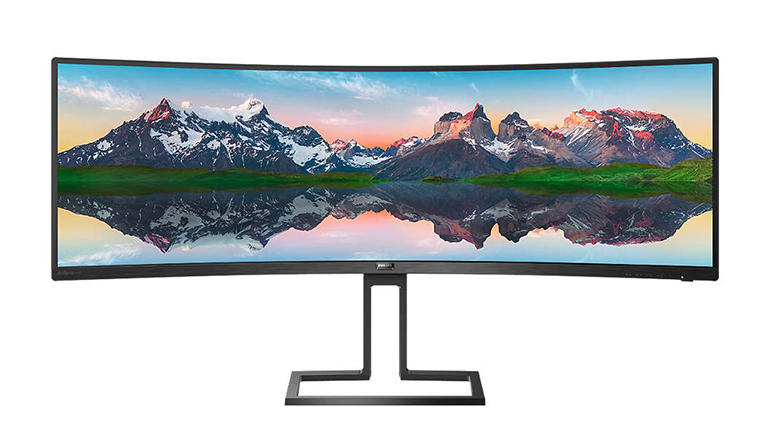'ZDNET Recommends': What exactly does it mean?
ZDNET's recommendations are based on many hours of testing, research, and comparison shopping. We gather data from the best available sources, including vendor and retailer listings as well as other relevant and independent reviews sites. And we pore over customer reviews to find out what matters to real people who already own and use the products and services we’re assessing.
When you click through from our site to a retailer and buy a product or service, we may earn affiliate commissions. This helps support our work, but does not affect what we cover or how, and it does not affect the price you pay. Neither ZDNET nor the author are compensated for these independent reviews. Indeed, we follow strict guidelines that ensure our editorial content is never influenced by advertisers.
ZDNET's editorial team writes on behalf of you, our reader. Our goal is to deliver the most accurate information and the most knowledgeable advice possible in order to help you make smarter buying decisions on tech gear and a wide array of products and services. Our editors thoroughly review and fact-check every article to ensure that our content meets the highest standards. If we have made an error or published misleading information, we will correct or clarify the article. If you see inaccuracies in our content, please report the mistake via this form.
Philips 498P9 Brilliance review: Two high-performance QHD displays in one SuperWide 32:9 monitor


Philips 498P9 Brilliance
pros and cons
- MultiView / Picture By Picture
- Ultra Wide-Color, Adaptive Sync
- SmartImage (inc
- LowBlue mode) & SmartContrast
- Integrated USB 3 hub & KVM switch
- Built-in stereo speakers with 5W amp
- 4-bolt VESA mount
- Integrated mains power & mechanical on/off switch
- Factory calibration chart included
- B energy rating
- Switching the KVM is not as simple as promised
The Philips 498P9 Brilliance is a SuperWide curved LCD with a 49-inch (124cm) diagonal and 32:9 aspect ratio that can replace a dual display set-up. It provides the equivalent of two 27-inch QHD (2,560 x 1,440) displays side by side. You can display the video from two PCs and flip a single keyboard and mouse back and forth between the PCs using the built-in KVM switch.
Finished in a textured black, the styling of the 498P9 is unobtrusively minimal and the only visible branding is a small PHILIPS logo in the the centre of the bottom edge and 'Brilliance 489P' on the lower left corner.
Wide-screen view: the 49-inch Philips 498P9 Brilliance, which has a native resolution of 5,120 by 1,440 pixels, costs £749.
User controls
User control is via the usual row of buttons, hidden under the edge of the enclosure near the bottom right corner. The fifth button, last on the right, is the power ON/OFF button. With the display turned off from this button the 498P9 is still consuming approximately 0.3 Watts. There is a true power ON/OFF rocker switch located next to the IEC power socket. When on and in normal operation the 498P9 typically consumes 77.2W and has a 'B' energy rating. Our measurements show 0.3W and 63W for the review sample. Two typical 27-inch QHD displays with an 'A' energy rating might consume 50W to 55W combined.
The other four buttons are context related, dual-function buttons. The first is the SmartImage hot key: repeated presses cycle through the eight SmartImage options, with a ninth option to turn SmartImage off. With the OSD (on-screen display) menu selected this becomes a return-to-previous-menu-level button. The second button selects for signal input and the third is a customisable user function button. With the OSD displayed, these two buttons are up/down menu navigation buttons. The fourth button either opens the OSD or, with the menu open, confirms a selection.
The user manual mentions a handheld remote, but this is only available in China.
Audio
A built-in 5W stereo power amplifier drives two internal loudspeakers with downward facing grilles located along the bottom of the display enclosure. Audio input is via the HDMI or DisplayPort connections.
Automatic image optimisation
Like many Philips display products in the last few years, the electronics driving the display on the 498P9 includes the automatic image optimisation features SmartImage and SmartContrast. For both of these features, the incoming video signal is analysed and dynamic adjustments are made to the display parameters. Both can be turned off, if required, via the OSD.
Top ZDNET Reviews
SmartImage dynamically adjusts contrast, colour saturation and sharpness according to a chosen content type. It offers a choice of Movie, Game, Economy, LowBlue mode and SmartUniformity.
SmartContrast dynamically adjusts the brightness of the backlight to provide optimum image contrast. It can also help to reduce power consumption.
Display technology
The 498P9 has a 48.8-inch diagonal (124cm) Vertical Alignment LCD panel with a 1800R curvature (a 1.8-metre radius). The native resolution is 5,120 by 1,440 pixels with a pixel pitch of 0.233 by 0.233mm.
Colour gamut is specified as 121% of sRGB, 103% of NTSC and 91% of Adobe RGB. Which is good for a W-LED backlit VA LCD. Displays with quantum dot backlights can do better, though: one of the few Philips monitors to employ a quantum dot backlight, the 436M6, offers a gamut of 145% of Adobe RGB.
The colour gamut for this display is noticeably better than would normally be expected for a traditional VA-LCD panel. Rather than use a quantum dot backlight to extend colour gamut, Philips has used a technology it calls Ultra Wide-Color. This achieves an improvement in gamut by tweaking the chemistry of the backlight LEDs and the transmission characteristics of the colour filters in the LCD panel for a better response match.
Spectrogram of the typical backlight W-LED showing that, while the blue spike from the LED is a good match for the blue LCD filter transmission curve, the rest of the output is not as good a match for the green or red filters. Typical filter responses are shown as dotted lines.
W-LEDs typically used in display backlights are visible blue LEDs with a yellow phosphor, and while their light appears 'white' to the human visual system, it isn't a particularly pure 'white'. This is normally not a good match to the response of the R,G and B colour filters in an LCD panel, which limits gamut.
Each 498P9 is supplied from the factory with a calibration chart. Brightness and colour uniformity are measured at 25 points across the display. Relative to the centre point, measurements must be between 97% and 102% for brightness uniformity and less than 2 for average Delta E.
Connections
This diagram of the 489P9 I/O connections is from the user manual.
All connections to the Philips 498P9 are downward facing along the top of a recess that runs along the back of the display, above the lower edge. Viewed from the back, the 3 pin IEC socket for the power lead is situated at the left end of the recess, along with a mechanical power on/off rocker switch. The I/O connections are grouped at the right end. The video connections include two HDMI connections 1 and 2 which are HDMI 2.0 compliant and one DisplayPort connection which is DP1.4.
A built-in USB 3.2 hub is included which has two upstream connections and four downstream. One of the downstream connections supports BC 1.2 fast charge. A 3.5mm jack socket caters for headphone connection.
SEE: Top 100+ tips for telecommuters and managers (free PDF) (TechRepublic)
The USB hub supports Keyboard Video & Mouse (KVM) switching for use when the display is connected to two PCs (actually it's keyboard and mouse switching). Switching is accomplished either through the OSD menu, or the User Function button -- the third of the five user controls -- can be assigned as a KVM toggle. Although Philips says in the literature for the 498P9 "A convenient button allows you to quickly switch between sources," there is no trace of a dedicated KVM button on our review monitor.
Included accessories
Included with the 498P9 are an IEC mains cable, a DisplayPort cable, an HDMI cable, a Quick Start leaflet, the calibration sheet and a user manual on CD.
Conclusions
The 498P9 is a neat all-in-one solution for users who would otherwise need to use two large Quad HD displays. The use of a SuperWide panel guarantees image uniformity and colour balance, which is often more difficult to achieve with two separate monitors.
In use, although it can be operated as a full-width 5,120-by-1,440 display, it makes little sense to do so for general computing tasks. At full width, while control menus stay along the edges of the display, pop-up control panels, web pages, or text documents naturally appear in a narrow strip one quarter of the screen width, down the centre of the display. Setting document zoom to page width utilises the entire width of the display, but vertically only displays a strip of perhaps ten sentences. Full-screen YouTube video occupies the centre half of the display.
The Ultra Wide-Color gamut-boosting technology, along with Philips smart image processing, does manage to extract very good image quality from the VA LCD panel in the 498P9.
The built in audio lacks bass but is otherwise of reasonable quality and is certainly convenient, while the built-in KVM is crippled by the lack of the promised 'convenient button'. Ideally this would be an external button on a flying cable that could be situated near a keyboard and mouse.
RECENT AND RELATED CONTENT
Working from home on a laptop? Check out these external monitors
Get the bigger picture: multi-tasking monitors for power users
Read more reviews
- ZAGG accessories for Samsung Galaxy Note 20 Ultra: Drop and screen shatter protection
- 360 S9 vacuum hands-on: A powerful two-in-one robot, but the app has flaws
- Sony Xperia 10 II review: An affordable but disappointing wide-screen experience
- Selpic P1 hand-held printer hands-on: A tiny wireless inkjet printer for multiple surfaces
- Samsung Galaxy Note 20 Ultra review: 5G, display, cameras, and S Pen make it the best phone for business